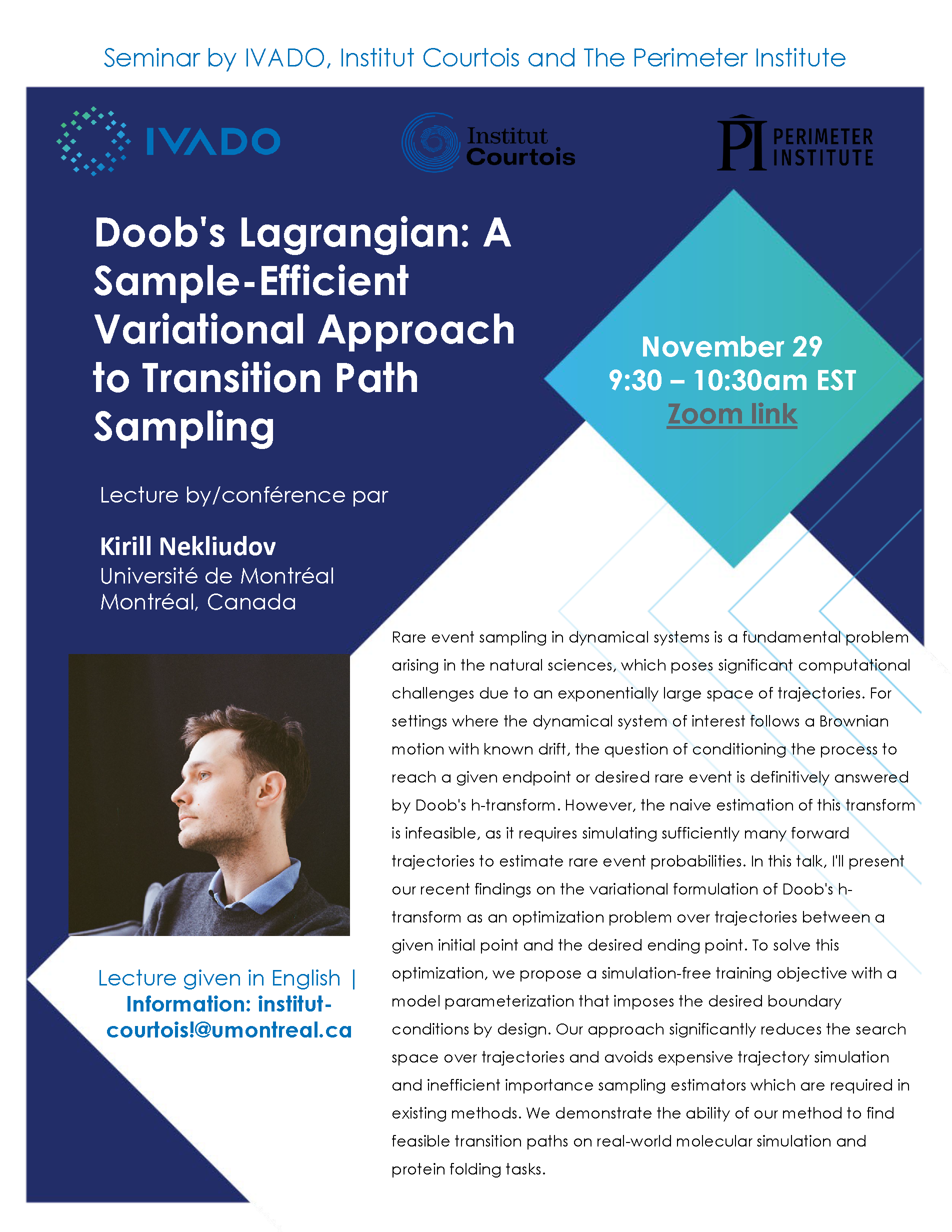Doob's Lagrangian: A Sample-Efficient Variational Approach to Transition Path Sampling
APA
(2024). Doob's Lagrangian: A Sample-Efficient Variational Approach to Transition Path Sampling. Perimeter Institute. https://pirsa.org/24110049
MLA
Doob's Lagrangian: A Sample-Efficient Variational Approach to Transition Path Sampling. Perimeter Institute, Nov. 29, 2024, https://pirsa.org/24110049
BibTex
@misc{ pirsa_PIRSA:24110049,
doi = {10.48660/24110049},
url = {https://pirsa.org/24110049},
author = {},
keywords = {Other},
language = {en},
title = {Doob{\textquoteright}s Lagrangian: A Sample-Efficient Variational Approach to Transition Path Sampling},
publisher = {Perimeter Institute},
year = {2024},
month = {nov},
note = {PIRSA:24110049 see, \url{https://pirsa.org}}
}
Kirill Neklyudov
Collection
Talk Type
Scientific Series
Subject
Abstract
The 3rd talk of a monthly webinar series jointly hosted by Perimeter, IVADO, and Institut Courtois. Rare event sampling in dynamical systems is a fundamental problem arising in the natural sciences, which poses significant computational challenges due to an exponentially large space of trajectories. For settings where the dynamical system of interest follows a Brownian motion with known drift, the question of conditioning the process to reach a given endpoint or desired rare event is definitively answered by Doob's h-transform. However, the naive estimation of this transform is infeasible, as it requires simulating sufficiently many forward trajectories to estimate rare event probabilities. In this talk, I'll present our recent findings on the variational formulation of Doob's h-transform as an optimization problem over trajectories between a given initial point and the desired ending point. To solve this optimization, we propose a simulation-free training objective with a model parameterization that imposes the desired boundary conditions by design. Our approach significantly reduces the search space over trajectories and avoids expensive trajectory simulation and inefficient importance sampling estimators which are required in existing methods. We demonstrate the ability of our method to find feasible transition paths on real-world molecular simulation and protein folding tasks.Zoom link
